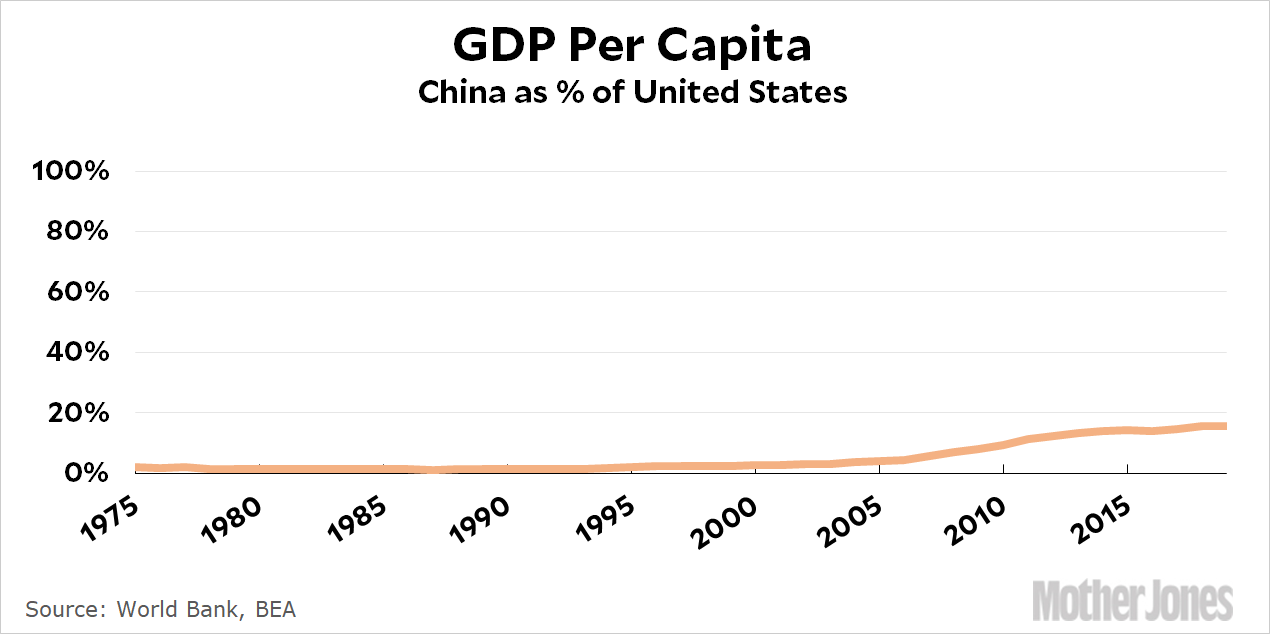This is one of my pet peeves, so I beg your indulgence. This is from the Wall Street Journal today:
As the rest of the world struggles to contain the coronavirus, China’s recovery is gaining momentum, positioning it to further close its gap with the U.S. economy….That bounceback, while far from China’s heady expansions of past years, should nonetheless help the world’s No. 2 economy move faster in catching up with the U.S., which could shrink by as much as 8.0% in 2020.
It is also buttressing Beijing’s belief that China’s state-led model, which helped the country navigate the 2008-09 financial crisis with minimal pain, is better than the U.S.’s market system, emboldening Chinese leaders at a time of rising geopolitical competition with the U.S.
It’s common practice to say that China’s economy is #2 in the world, or perhaps even #1 depending on how you do your currency conversions. And it’s true that China’s GDP is about $15 trillion compared to America’s $20 trillion. That’s pretty close, and China is growing faster. Eventually they’ll catch up.
But who cares? It’s like bragging that California has more hospitals than Oregon. Of course it does. California has ten times as many people. In the case of China, what matters is GDP per person, and on that score China is light years behind the US. Here’s the chart you knew was coming:

China’s GDP per person is about $10,000, compared to $65,000 in the United States. They aren’t even in the same ballpark, and it will be decades before they catch up to us—if they ever do.
There are obviously some legitimate reasons to look at overall GDP since it affects things like trade volume and military capacity, but most of the time it seems to be little more than an attempt at drama. For some reason we’re supposed to be afraid that China is going to take over the world, but that looks pretty ridiculous if you look at living standards and GDP per capita. So instead we’re spoon-fed total GDP, even though we almost never do that for any other country. Do you have any idea how Germany’s GDP compares to ours? Or Spain’s? Or Denmark’s? Here’s a hint: they’re a lot lower because they have a fraction of our population.¹ Everyone knows it would be a ridiculous comparison, which is why you never see it.
But when it comes to China, we hear about it all the time. We should knock it off.
¹For the record, roughly $4 trillion, $1 trillion, and $0.3 trillion. Does this tell you anything interesting at all?

















